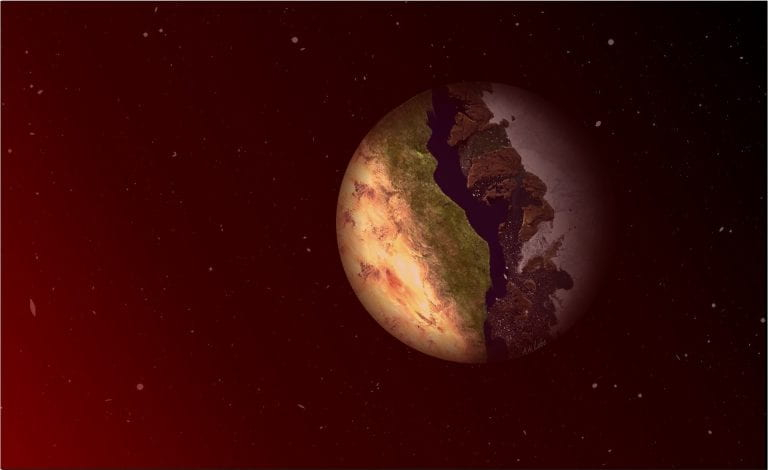Extraterrestrial life may exist in “Terminator Zones”.
Normally, astronomers look for traces of extraterrestrial life, especially on ocean-covered exoplanets. A study by researchers at the University of California could now expand the search radius.
Because like the team around the physicist and astronomer Ana Lobo describesthere could be habitable areas in so-called “terminator zones” on certain exoplanets.
Editor’s Recommendations
There could be liquid water there, and it wouldn’t be too hot or too cold. In astronomy, the terminator is the day-night boundary of a planet.
The planets envisaged by Lobo have a permanent day side and a permanent night side because they permanently face the star they orbit. Similar to the moon on earth.
While it might be too hot on the side facing the star and too cold on the far side, the area around the day-night boundary could be just the right temperature. Water would neither evaporate nor freeze there.
According to that published in the Astrophysical Journal study Such planets are particularly common. Their stars, called M dwarf stars, made up about 70 percent of the stars visible in the night sky, Lobo said.
Lobo and her colleagues calculated the climate on the planets using software that is also used for the climate on Earth. Made some adjustments for the special planets, including slowing down the rotation of exoplanets.
“We’re trying to draw more attention to planets with limited water resources. These, while not having large oceans, could have lakes or other small bodies of water,” Lobo explained.
James Webb Telescope: The most beautiful images and their meaning
The “Terminator” climate zones, which extend in rings around the planets, could therefore be promising. Research into climate conditions increases the chance “of finding and correctly identifying a habitable planet in the near future,” says the researcher.
However, in order to find potentially habitable zones where life may have originated, astronomers would need to change the way they study exoplanets. It is possible that the corresponding biosignatures can only be found in certain parts of the atmosphere.



